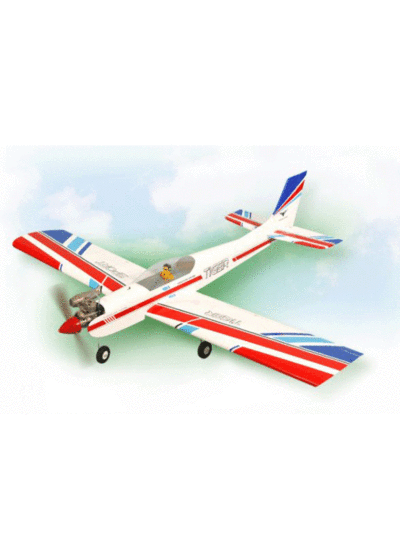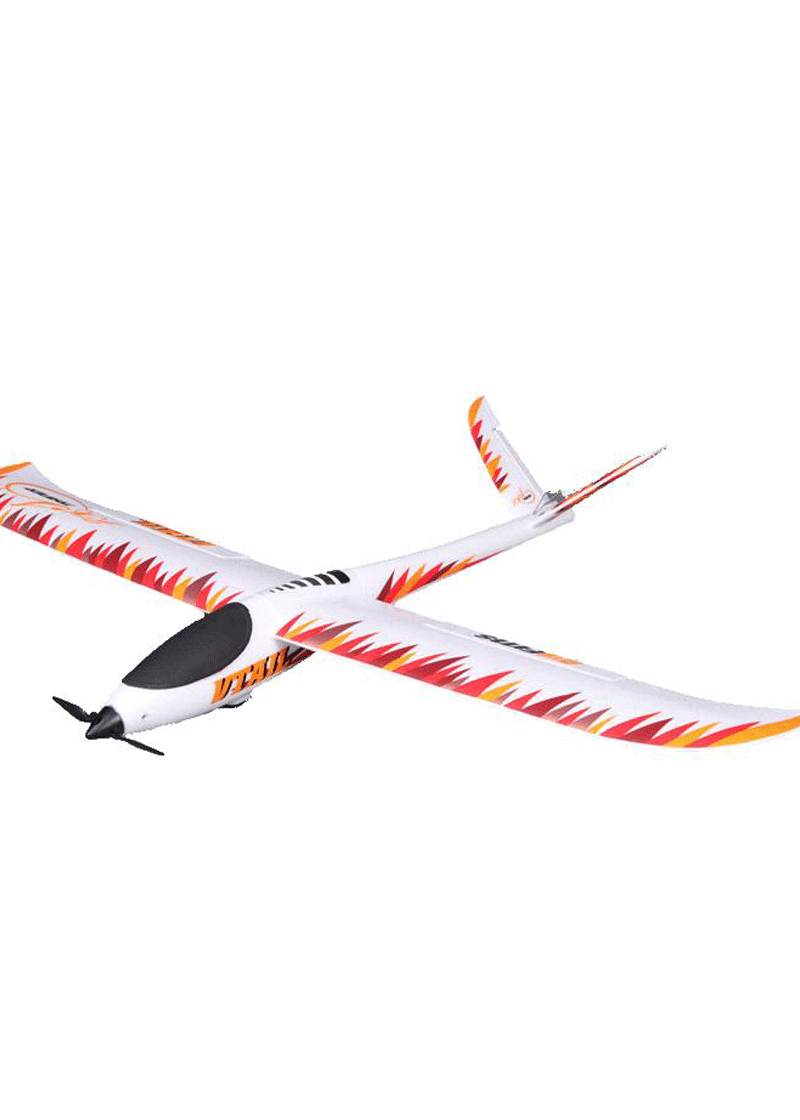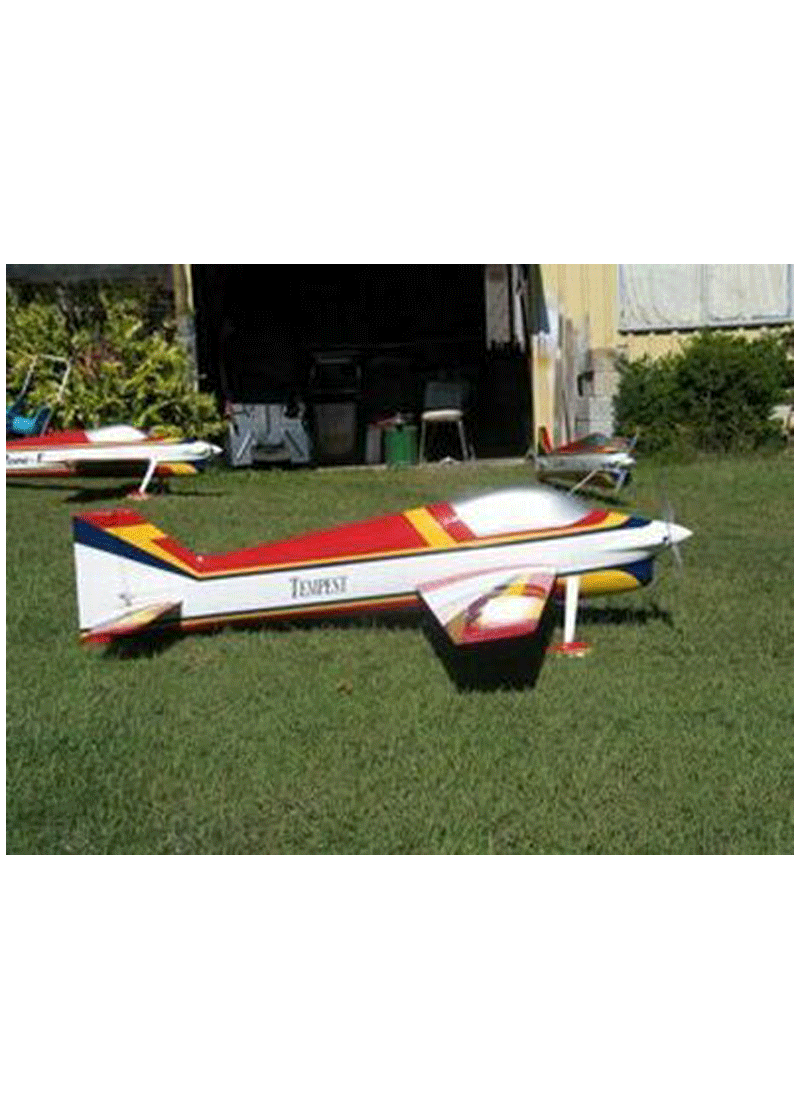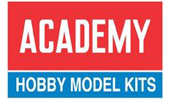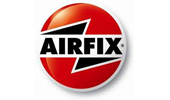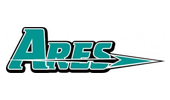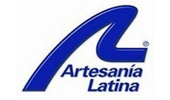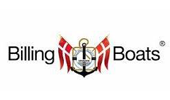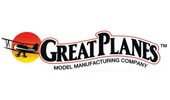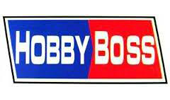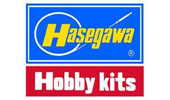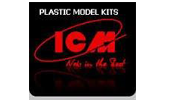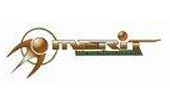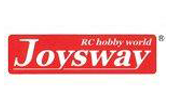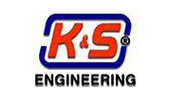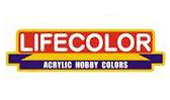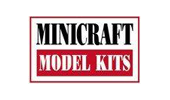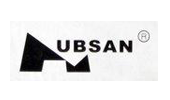All R/C Airplanes, ARF, F3A Pattern
Composite ARF Impact F3A model
Availability:
Out of stock
$600.00
Out of stock
CompareDUE TO SELLING ON CONSIGNMENT FREIGHT IS THE RESPONSIBLITY OF THE BUYER AND WILL BE ADDED TO THE COST
General information about
fully-composite aircraft structure and design
All the parts are produced in negative molds, manufactured using vacuum-bagged sandwich
construction technology. All parts are painted in the moulds, either single colour or designer
colour schemes. A new production method, called TAVS (Total Area Vacuum Sandwich), enables
us to present this aircraft with incredible built-in strength, while still being lightweight, and for a
price that nobody could even consider some years ago. This production process has huge
advantages, but a few disadvantages as well. These facts need to be explained in advance for
your better understanding.
Description of Parts
The Wings
Both wing halves are made in negative moulds, fully vacuum bagged, using only 2 layers of 2 oz. cloth in combination with a very hard 2 mm foam sandwich, which form a
hard and durable outer skin.
The ailerons are hinged already for you – laminated in the
mould and attached to the wing with a special nylon hinge-
Centreline of hinge axis
cloth, sandwiched between the outer skin and the foam.
This nylon hinge is 100% safe and durable. You will never
have to worry about breaking it, or wearing it out. There is
no gap at all on the top wing surface, and there is a very
narrow slot in the bottom surface, where the aileron slides
under the main wing skin during down throw. This means
Phenolic control horn
that the hinge axis line is on the top surface of the wing, not
in the centre. This is NOT a disadvantage, if you program
in about 10% NEGATIVE aileron differential in your transmitter. This means that the ‘down’ throw
needs to be about 10% more than the up throw. Why? Because the axis of the hinge is not at
the centre line of the aileron, so it moves slightly in and out when operated, and the aileron gets
a little “smaller” in surface area when moving down.
The bottom slot needs some explanation, too. The cut line is exactly in the correct position so
that the aileron slides under the wing skin smoothly. If the cut was a few mm forward or back, it
would not work properly. So, make sure that the lip is not damaged, and that the aileron slides
under this lip perfectly. It will NOT lock at any time, if lip is not damaged. If damage occurs to the
lip, you can cut off 2-3 mm, but you should NEVER need to cut off more than this.
The Fuselage
The fuselage is also made in negative moulds, constructed using TAVS technology.
It is extremely lightweight, yet more than strong enough for the recommended motors and use.
The landing gear mount is strong and doesn’t need any extra reinforcement. You have an
extremely light weight fuselage, and the gear loads need to be led into the structure gently. The
landing gear is a fairly flexible design, which works very much like shock absorbers. This plane
is not made for crashing, but the landing gear will take some hard landings without problems. Do
not change or modify it, as the results would only be negative. We had plenty of time and
experience to engineer the strength needed in this area – and we did !
Composite-ARF IMPACT
techsupport@composite-arf.com
The Stabilisers
The stabiliser parts are also vacuum
bagged sandwich. construction. The elevator control surfaces are elastic-hinged, and the rudder is hinged with a Robart Pin-Hinges.
The rudder & elevator design gives at
least 40 degrees throw. The horizontal
stabs are mounted on a 10mm carbon
tube and one 6mm Ø carbon anti-rota-
tion pin each, and controlled by a pair of
digital mini-servos installed in each stab
half. Please remember during assembly
of the plane to save every gram of
weight in the tail area. The rudder is
adequately powered by a single JR8411
servo, or similar, in the fuselage with a
closed-loop system.
Take Care
Composite sandwich parts are extremely strong, but fragile at the same time. Always keep in
mind that these contest airplanes are designed for minimum weight and maximum strength in
flight. Please take care of it, especially during transport, to make sure that none of the critical
parts and linkages are damaged. Always handle your airplane with great care, especially on the
ground and during transport, so you will have many hours of pleasure with it





